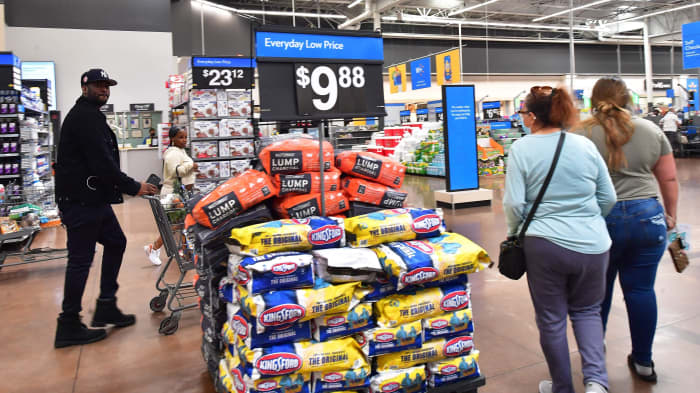U.S. inflation rate surges to 6.6%, PCE index shows, but prices might also be peaking
PCE climbs 0.9%, but core rate increase just 0.3% for second month in a row
The numbers: The Federal Reserve’s preferred measure of inflation rose a sharp 0.9% in March, but the increase largely stemmed from a surge in the cost of gas and there were some signs that intense price pressures could be starting to ease.
Over the past 12 months, the personal consumption price index has climbed 6.6%, up from 6.4% in February, the government said Friday. That’s the steepest increase since 1981.
https://myanimelist.net/profile/Klara1970
Yet a narrower measure of inflation that omits volatile food and energy costs, known as the core PCE, rose by just 0.3% in March for the second month in a row. That matched the Wall Street forecast.
The increases in the core rate of inflation in February and March were the smallest back-to-back readings since last summer.
https://myanimelist.net/comments.php?id=12332536
What’s more, the rate of core inflation in the past year slipped to 5.2% from 5.3%, marking the first month-to-month decline in more than a year.
https://myanimelist.net/comments.php?id=12332536&show=20
The Fed views the PCE index — the core rate in particular — as the most accurate measure of U.S. inflation. It’s more comprehensive and takes into account when consumers substitute cheaper goods for more expensive ones — say ground beef for filet mignon or frozen spinach for fresh.
https://myanimelist.net/comments.php?id=12332536&show=40
Big picture: The highest inflation since the early 1980s is putting more financial pressure on households and businesses. Even if the rate of inflation excluding gas and food has slowed, it offers small comfort for Americans who have to pay more to fill up the tank and put dinner on the table.
https://myanimelist.net/comments.php?id=12332536&show=60
The Fed is moving to raise interest rates rapidly to try to cool off inflation, but economists say it will take time.
https://myanimelist.net/comments.php?id=12332536&show=80
Prices have soared partly because of ongoing pandemic-related shortages of key supplies such as computer chips. The Fed’s easy-money strategy and massive government stimulus spending after the viral outbreak also contributed. Now all that stimulus is gone or going away.
https://myanimelist.net/comments.php?id=12332536&show=100
Yet rising inflation is spurring workers to ask for higher pay and businesses to charge higher prices, potentially making it harder for the Fed to reverse the tide.
https://myanimelist.net/comments.php?id=12332536&show=120
The numbers: Consumer spending rose a sharp 1.1% in March, but the increase barely outpaced another surge in inflation as Americans confront the biggest price increases in 40 years.
Economists polled by The Wall Street Journal had forecast a 0.7% rise.
Although households spent more, they are also paying higher prices for gas, groceries and other staples.
https://myanimelist.net/comments.php?id=10400261
A key measure of inflation included in the report rose by 0.9% last month, government figures showed. A big jump in gasoline prices was a chief reason why.
Even after factoring in inflation, consumer spending rose a smaller but still solid 0.2% last month. But households appeared to dig into their savings to meet their needs.
The savings rate fell to 6.2% from 6.8% and is now below pre-pandemic levels.
Americans may be drawing on their savings because incomes are no longer keeping up with inflation — they increased by 0.5% in March.
https://myanimelist.net/comments.php?id=10400261&show=20
Wages have also risen sharply over the past year, but not as fast as the cost of living.
Big picture: The U.S. economy has downshifted into a lower gear after a rapid burst of growth last year. Yet consumers and businesses are still spending and investing at fairly healthy levels — even after taking high inflation into account.
https://myanimelist.net/comments.php?id=7017805
The U.S. is likely to keep expanding at a steady clip, economists say, but rising interest rates and more turbulence overseas in Ukraine and China loom as ongoing threats. If inflation gets worse it could spell even more trouble.

Comments
Post a Comment